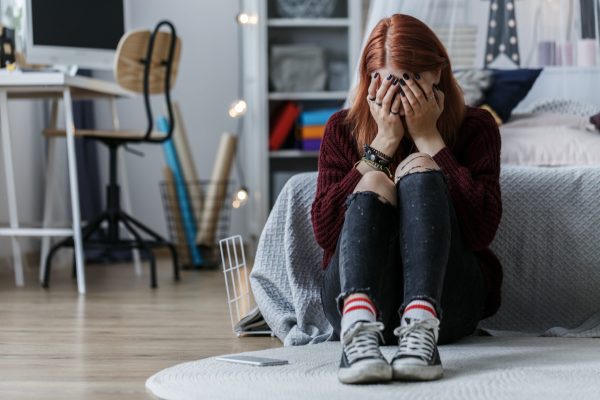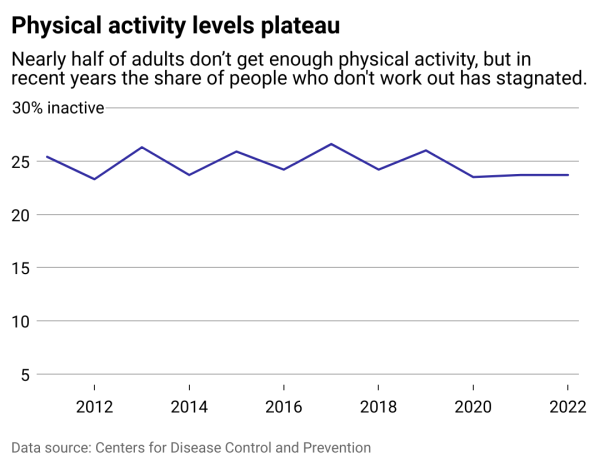By traditional measures of well-being, America’s children and teens should be doing well.
Consider that:
- Over the past two decades, high school graduation rates have gone up.
- Fewer teens are taking up smoking.
- The birth rate among 15-to-19 year olds is at a record low.
- Arrest rates among teens are dropping. Youth drug use is trending down.
Nevertheless, teens report that their own mental health is spiraling: Increasingly, they are anxious, depressed and wrestling with thoughts of suicide. The Hechinger Report looks at how the measures that researchers have traditionally used to gauge adolescent well-being have become sharply out of step with the reality of adolescent life.
“I don’t think my research is saying [other measures] don’t matter, but I don’t think they capture the whole picture,” said Nathaniel Anderson, who explored the disconnect between measures of child well-being and young people’s views on their mental health as part of his doctoral studies in public health at the University of California, Los Angeles. He wrote about his findings for the organization Child Trends.
For decades, researchers have tried to capture a national picture of youth well-being by combining a number of social indicators, such as obesity rates, rates of tobacco use, family access to health insurance, academic proficiency on state tests, graduation rates, drug use and teen birth rates.
Until recent years, those measures and youth reports of their depressive symptoms, captured in a long-running national research project called Monitoring the Future, have mostly moved in tandem. As other measures improved, youth also reported feeling less anxiety and depressive symptoms.
Somewhere in the 2010-12 time frame, that abruptly changed. Many of the other measures continued on an upward trajectory, but teens started reporting that they were growing increasingly anxious and depressed.
What happened then? Researchers have pointed to the introduction of smartphones — the iPhone was introduced in 2007 — and the rise of social media as the culprit. But teasing apart what’s actually happening is difficult. Are teens struggling because smartphone time is leading to less sleep? Or are they exposed to information via social media that is leading to a greater sense of anxiety and depression?
And then there are other social factors, such as economic precarity, a greater societal willingness to talk about mental health, so-called helicopter parenting, and the opioid epidemic, among many others.
“I certainly agree with the emerging evidence that social media and cellphones are playing some sort of role here, and given its predominance in young peoples’ lives it’s potentially a huge one,” Anderson said. “But at the same time, for it to have had this sort of dramatic effect, it probably required other conditions to be in place.”
Unfortunately, researchers don’t have good, long-term, national data on other elements that play a role in helping youth thrive: measures such as a young person’s access to green space, their relationship to their friends and family, or their sense of optimism and hope. More focused, community-based assessments may do a better job at capturing some of these more subjective measures than the large-scale national models currently in use, Anderson said.
Now what?
There are still plenty of steps schools, educators and parents can take to address the clear problems facing young people.
Schools should support student mental health by building in time to teach skills such as coping with stress, said Ava Havidic, a 17-year-old senior in Broward County, Florida, and a facilitator for the Student Leadership Network on Mental Health and Well-Being, organized by the National Association for Secondary School Principals.
“There’s so many hours in the school day,” said Havidic, who is also the student representative on the Broward County school board, that young people “can’t find another time in the day to practice mindfulness and find these positive outlets to build on mental health.”
And clamping down on smartphones won’t help youth when they are on their own and out of the direct control of their parents, she said. “It’s always easy to blame some certain outlet, or something students are doing. But the easy way to deal with this is making sure that we have these prevention tools, so it doesn’t matter if they are using their phones — they know how to deal with their stress,” Havidic said.
Samantha Lott, a mental health coordinator for Communities in Schools North Texas, works in Lewisville — about 30 miles northwest of Dallas — and surrounding communities. Anxiety and depression are present even with younger students, she said, and smartphone use does play a role; students can be bullied via social media, or inappropriate material wirelessly “airdropped” to their phones.
But the adults around them may also be making things worse, unwittingly, she said. Some parents insist their children are doing fine regardless of evidence to the contrary. Educators sometimes increase students’ academic workload and don’t leave time for mental health support. Schools may use isolation as punishment, like forcing children to eat alone in the cafeteria — “lonely lunch” — as a consequence for misbehavior, she said.
“That’s not setting our students up for success. They’re not teaching their children how to interact with each other,” Lott said. “And you can see that with older kids. A lot of the students are so scared to reach out, because they’ve had a bad experience with school.”
Adults taking more time to reach out to the students — and model healthy practices themselves — can help, Lott said. Youth “all could use more support relationships. Take the time to be open and ask them questions, instead of assuming we know the answers.”
Written by Christina A. Samuels for The Hechinger Report.
Re-published with CC BY-NC 4.0 License.







